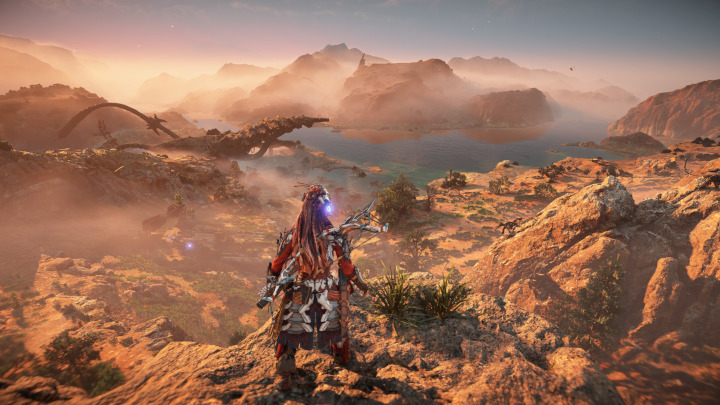
Horizon Zero Dawn‘s biggest mistake was that it launched three days before The Legend of Zelda: Breath of the Wild, so its lofty ambitions were almost immediately quashed by the industry-rattling Nintendo behemoth. Normally, the games industry has more than enough room for two massive-budget open worlds to launch in the same week, but Breath of the Wild was different. Breath of the Wild forced the entire gaming audience to notice, all at once, that open worlds weren’t really all that open.
Trying to play Horizon Zero Dawn after having played Breath of the Wild could be an exercise in frustration. After having complete freedom to climb any mountaintop, scale any rock wall, and soar high above the world using a paraglider, Zero Dawn’s more traditional design — using cliff faces to contain the player inside of the game’s boundaries — felt outdated. It was maddening to approach a sheer cliff face and realize it was deliberately put there to hinder your progress and not something you could simply climb over with enough stamina.
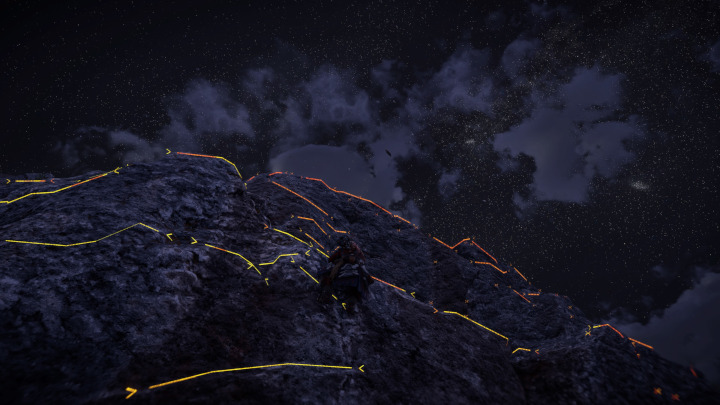
BotW broke our collective gaming brains, and it had never been more obvious that our open-world games had long been penning us in. Zero Dawn was the last triple-A open-world game to come out before BotW, and playing it in tandem with Nintendo’s masterpiece only made its “penned-in” approach more obvious.
That’s not to say Zero Dawn wasn’t great — it’s an incredibly ambitious game with one of the most brilliant world concepts of its generation — but it will forever live in the shadow of Breath of the Wild‘s massive success.
With Horizon Forbidden West, it’s clear that Guerilla Games took this lesson to heart, and Forbidden West is the game that Zero Dawn would have been had it had the time to study Breath of the Wild before release.
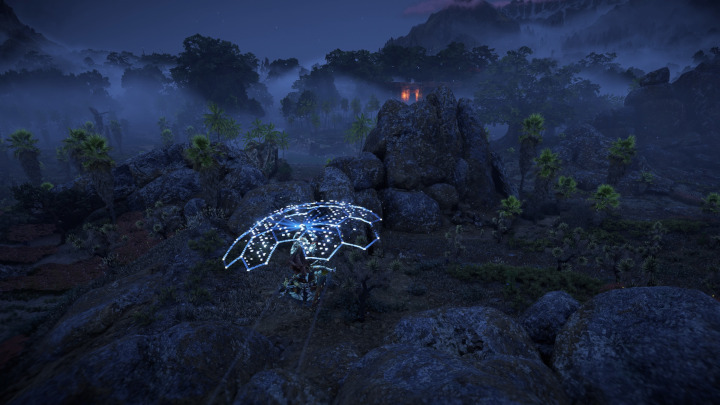
Part of this is the fact that Aloy now has a paraglider, which will inevitably remind players of BotW. But the thing is, the paraglider was only one piece of BotW‘s overall design philosophy — if a player sees something interesting in a game world, they should be given the tools to get to that thing. Additionally, it’s far more satisfying to be guided by a sense of wonder than a quest marker.
Obviously, BotW didn’t have a monopoly on this philosophy. One only has to look at classics like Journey and Shadow of the Colossus to see examples of this that predate BotW‘s 2017 release (and you could surely go back in time even further to dig up similar examples that predate the ones I’ve given here). But BotW‘s biggest achievement was that it placed this sense of wonder at the core of its massive open world, proving that players would still be compelled to explore as much of it as they could without having to be goaded into it by a side quest or a marker on the map.
Horizon Forbidden West gets this. This is a game that’s full of breathtaking vistas, of mists that glow in the light of the setting sun, valleys that stretch out majestically between enormous mountain peaks, turquoise water lapping sandy shores. And none of those things are off limits — you can walk among that mist, scale those peaks, and swim in that water.
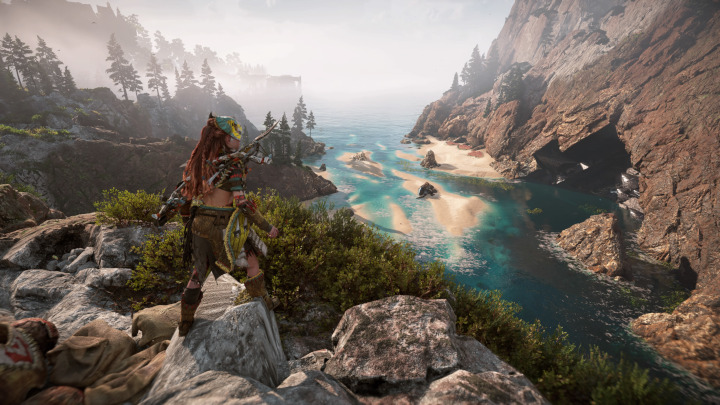
And part of this is that Forbidden West refines the climbing mechanic from BotW. The one flaw, from a developer’s perspective, in BotW‘s free-climbing system is that it gives the player too much freedom. If you want to prevent a player from climbing something, you can’t just make it too tall, because their are food options (in BotW) to increase that player’s stamina almost indefinitely. You need to either make it a non-climbable surface (like the insides of shrines) or make it rain all the time (so surfaces become too slick to climb).
In Forbidden West, though, cliffside handholds are painstakingly mapped out. If you scan a cliff face with your Focus, it lights up like a neon sign, with glowing yellow marks on every single surface that you can climb.
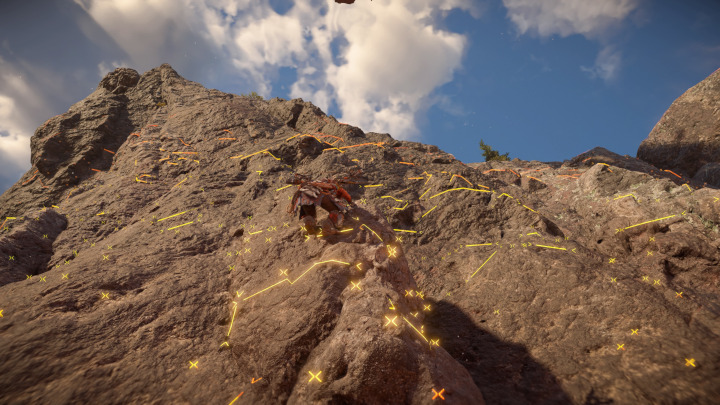
This gives the developers the ability to balance player freedom against the fact that some places need to be inaccessible as a matter of design — for example, to maintain the challenge of climbing-based puzzles. And Forbidden West found a brilliant way to signal to players which surfaces are climbable using an already-established game mechanic (Aloy’s Focus). When you Focus pulse a cliff face for the first time, it’s jaw-dropping to think about just how ambitious of a feat this must have been for the developers at Guerilla.
Now, I’ve been sort of talking my way around something that I haven’t addressed yet — that old elephant in the room, Ubisoft.
Ubisoft has a knack for creating super ambitious open worlds and making them feel compelling. If you pick up an Ubisoft open-world game — Assassin’s Creed, say, or Far Cry — you know what to expect just by seeing the game’s title. These games adhere to a familiar formula, making them comfort-food games rather than deeply engrossing experiences.
Even so, these games do some things really well, which is why people keep buying into them year after year. For example, climbing towers to reveal more of the map — radio towers in Far Cry and viewpoints in Assassin’s Creed — has become a staple of open-world games. Even Breath of the Wild borrowed it because it works. So even though BotW and Forbidden West are deliberately breaking from the Ubisoft “paint-by-numbers” formula, they’re not afraid to borrow from Ubisoft when it makes sense.
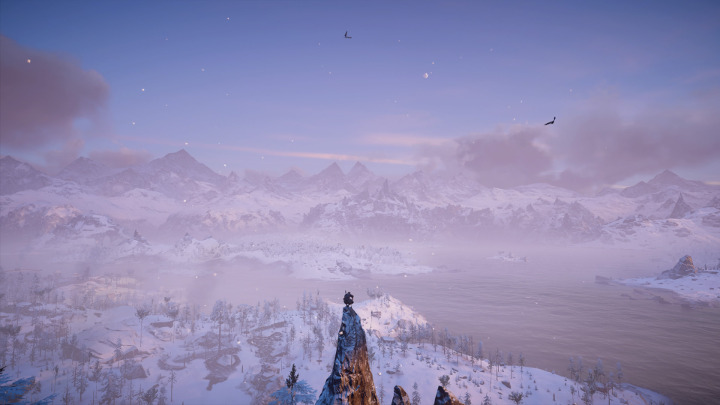
The clearest example of this is that Forbidden West brings back the Tallnecks from the previous game, which is just the Horizon version of the Ubisoft “tower” feature. Of course, these are quite a bit more challenging this time around, with more elaborate quest lines to follow before you’re able to approach one. I really like this, as towers in Ubisoft games (and even BotW) are thrilling the first time, but begin to take on a “been there, done that” feel by the fourth or fifth (or 40th) one. Forbidden West keeps them feeling fresh throughout its duration by limiting the number of them, and also making each one feel like a unique challenge. One Tallneck requires you to reposition a satellite dish, for example, while another must be approached with a flying mount.
Oh yeah, Horizon Forbidden West has flying mounts.
This is maybe a bit of an aside, but I can’t talk about Horizon Forbidden West without saying how compelling the character Sylens (played by Lance Reddick) is. He was one of the highlights of the previous game, and that’s still true in Forbidden West. The thing that makes him such a great character is that he’s so ambiguous. Too many video games paint a very thick line between what you’re supposed to perceive as “good” or “evil,” and Sylens doesn’t ever fit into one of those categories. Instead of a hero or a villain, Sylens is more of a trickster character, where his actions are self-serving, but he’ll actually help Aloy whenever his interests intersect with hers.
Sylens is basically Horizon’s Loki. In fact, I would go so far as to argue that Sylens is a better Loki than the actual Loki in Assassin’s Creed Valhalla.
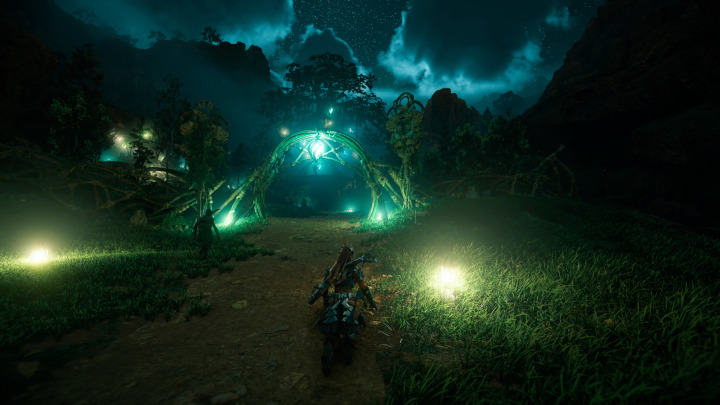
In so many ways, Horizon Forbidden West feels like Horizon Zero Dawn mixed with Breath of the Wild, with a little seasoning from Assassin’s Creed Valhalla. That’s not a bad thing at all — in fact, that’s exactly what the second Horizon game needed to be. It takes what works from previous games and discards what doesn’t, while refining its own systems to the point of near perfection. It’s Horizon for people who appreciated Breath of the Wild‘s contributions to the genre, but who also played Assassin’s Creed Valhalla as a guilty pleasure.
That’s the exact type of player I am, so for me, Horizon Forbidden West is pretty much perfect.